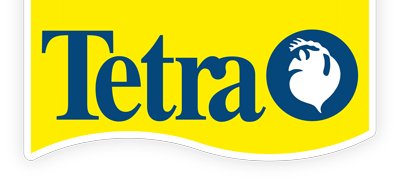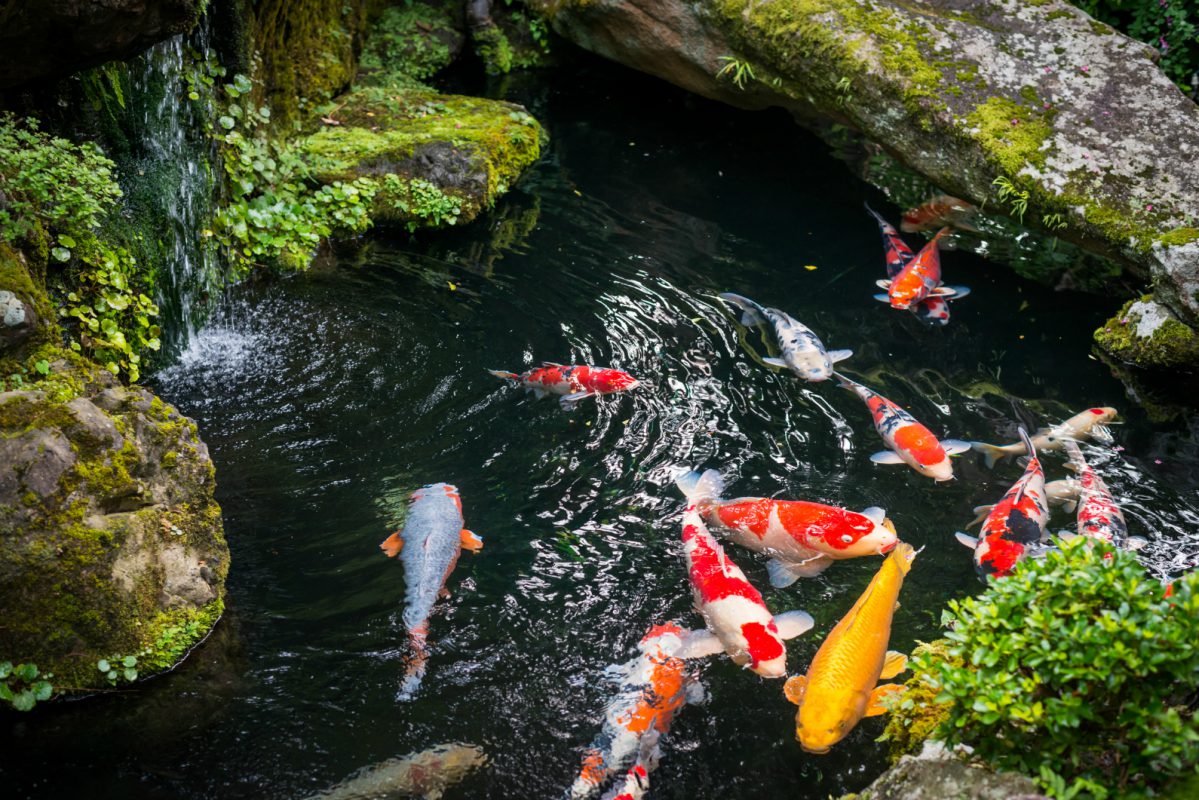Keeping pond fish healthy should start with good water quality. Fish who live in ponds with poor water quality are more likely to have raised cortisol levels as a stress response to their environment. One of the symptoms of raised cortisol levels is an inhibited immune system, leaving fish vulnerable to attack from a wide range of infectious organisms in the pond – known as pathogens.
There are many pathogens that live in the pond with the fish, but if your fish’s immune system is fully functioning then they will be able to keep these nasty bugs at bay. Other ways that we may suppress a fish’s immune system are by overstocking the pond, not providing enough dissolved oxygen, not monitoring pH and KH or feeding inappropriately
Take seasons into account
Your fish’s immune system is however at the mercy of seasonally-induced temperature change, and this is one factor that we can’t really control. Evidence shows that the important antibody response is suppressed in koi carp in water temperatures below 14⁰C, though elements of the non-specific cellular immune response can still be quite active. However, most pathogens also become less active in cooler water; the white spot parasite life cycle turns once every 6-7 days at 20⁰C, it may take months below 10⁰C.
As water temperatures rise in spring, pathogens can rapidly become more active, though the immune system of the fish can take longer to catch up. This leaves a window of infection when the fish is vulnerable to attack. Make sure you are a vigilant pondkeeper and monitor water temperatures very closely. Not only does this allow you to keep your fish as healthy as possible, but also helps you to indicate when to change their diet from wheatgerm to a general food. Good pond monitoring also lets you keep an eye out for signs of ectoparasitic infection. These signs can include flicking, flashing, excessive mucous covering, lethargy, respiratory distress and ragged fins. A preventative dose of a broad-spectrum anti-parasitic treatment such as Tetra MediFin at this time might be useful, though ideally this would be better informed if the fish can be seen to be suffering from the first stages of the disease.
Instead of providing a preventative dose of anti-parasitic, try preventing diseases in other natural ways. Ensuring excellent pond water parameters, making sure your pond isn’t overstocked with fish and ensuring that you have an adequate filtration system giving your fish plenty of oxygen will help their immune system stay healthy, helping them fight off disease.
What’s the best way to treat a diseased fish?
Firstly, be sure that your fish are actually suffering from an ectoparasitic disease or something similar. Pond fish disease treatments usually contain an active ingredient called Malachite Green. Whilst this ingredient is amazing at killing a wide range of pathogens, the dosage amount must be properly measured so that it’s not toxic to fish. This is a risk worth taking if your fish is suffering from a nasty illness, but not one that should be taken lightly otherwise. The take-home message is simple: if you have clear evidence your pond fish are suffering from a disease, then use of a broad spectrum antiparasitic is vital.
Adding salt to the pond can be a gentler treatment for a range of fish diseases. This can reduce osmotic stress and promotes mucus production by the fish. However, many pond plants will not tolerate the salting, so holding the ill fish in a large container with 3 grams of salt per litre can be very beneficial. Clearly, the water in the container will need a small filtration system to ensure the injured fish’s wastes do not accumulate.
Are there any diseases I should really be watching out for?
For koi keepers, there is one pathogen that you should be on the lookout for especially, and that’s cyprinid herpesvirus 3 (CyHV3) better known as koi herpes virus, (KHV). This lethal disease is the nemesis of koi keepers, carp fisheries and farmers all over the World, it can kill entire populations of carp. In the UK, KHV is a notifiable disease, so suspicions and cases must be reported to the Fish Health Inspectorate and, if confirmed, a Designated Area Order will be legally enforced which either requires the euthanasia of all fish on the site and sterilising of all fish husbandry facilities or demonstrating 3 consecutive years without a further outbreak. So, it’s important to keep a close eye on your Koi at this time of year!
The aquatics industry has done much to limit the spread of KHV within ornamental carp. Fish coming to a retailer can be ‘preventatively acclimatised’, which involves maintenance of the fish for 2 weeks at 22⁰C, a temperature at which the virus, if present, simply cannot resist causing disease. When buying koi from a retailer, be sure their fish have been through this process. To be doubly sure, preventatively acclimatise koi in a quarantine system at your home before they enter your main pond may be an idea. If you have non-carp fish in your pond, these should be introduced to the new koi in the quarantine system rather than the main pond.
A quarantine system can be very useful to contain any pond fish diseases and allows you to acclimatise new fish to your care. Should any disease occur it can be restricted to the quarantine system rather than the main display pond, disease treatment in a small quarantine system will be much simpler and cheaper than dosing a large display pond also.
In summary, prevention of any pond diseases is always much better than cure. Fish will proceed through the delicate winter period much more effectively if they have been given the opportunity to feed in winter. If water quality conditions are monitored and optimal then this gives the fish the best chance to fight off opportunistic pathogens at this vulnerable time. If clear signs of ectoparasitic disease are shown, and water quality problems ruled out as an alternative explanation, then a dose of broad-spectrum antiparasitic should be applied.

